Categories
Subjects
Authors
Artists
Venues
Locations
Calendar
Filter
Done
March 28, 2024 – Review
Angela Tiatia’s “The Dark Current”
Stephanie Bailey
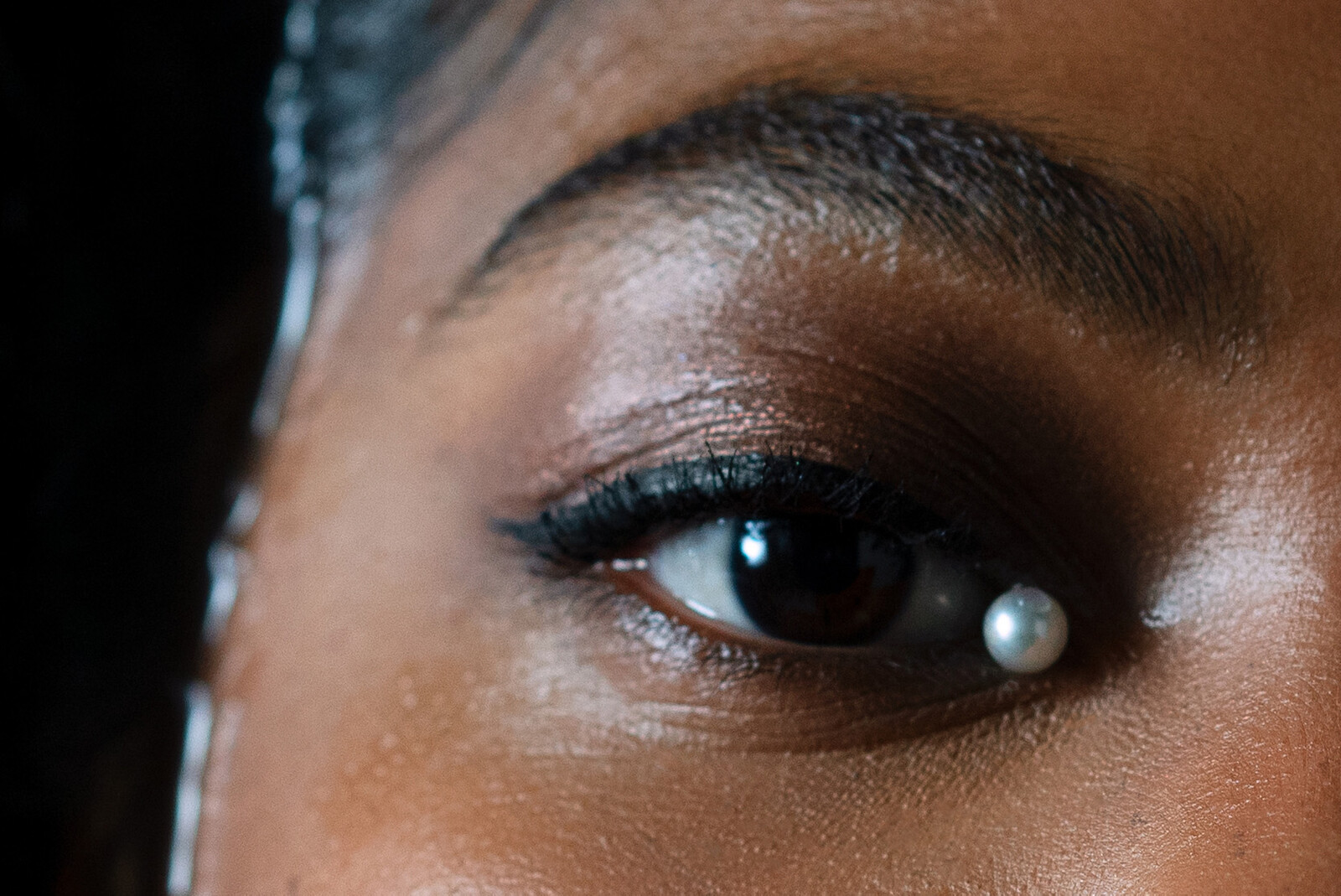
Angela Tiatia’s single-channel moving image work The Dark Current (2023), projected onto one wall in a darkened room, opens with a body-as-landscape. A cropped, lateral view of a floral appliqued fuchsia dress follows the concave slope from breast to waist as dark waters lap in the background, like an island. The camera slowly pans to the side, following the cleavage’s arc until it reaches the face of a woman with a pearl perched delicately at one tear duct. The lens then rises over her to gaze down at her from above. Lying in black water atop a magenta panel, her arms move slowly to create a frame of rippling waves around her.
The pearl is a portal to The Pearl (2022), an earlier immersive video installation not shown here, which was commissioned for “Matisse Alive” at the Art Gallery of New South Wales (2021–22), reflecting on Henri Matisse’s travels to the Pacific Islands through juxtapositions of his works with tivaevae quilts and commissions by artists Nina Chanel Abney, Sally Smart, Robin White, and Tiatia. Departing from Venus in a Shell (1930), a bronze sculpture that Matisse made the year he visited Tahiti, Tiatia composed The Pearl as a digital tapa, …
December 18, 2019 – Review
Kate Newby’s “Bring Everyone”
Claudia Arozqueta
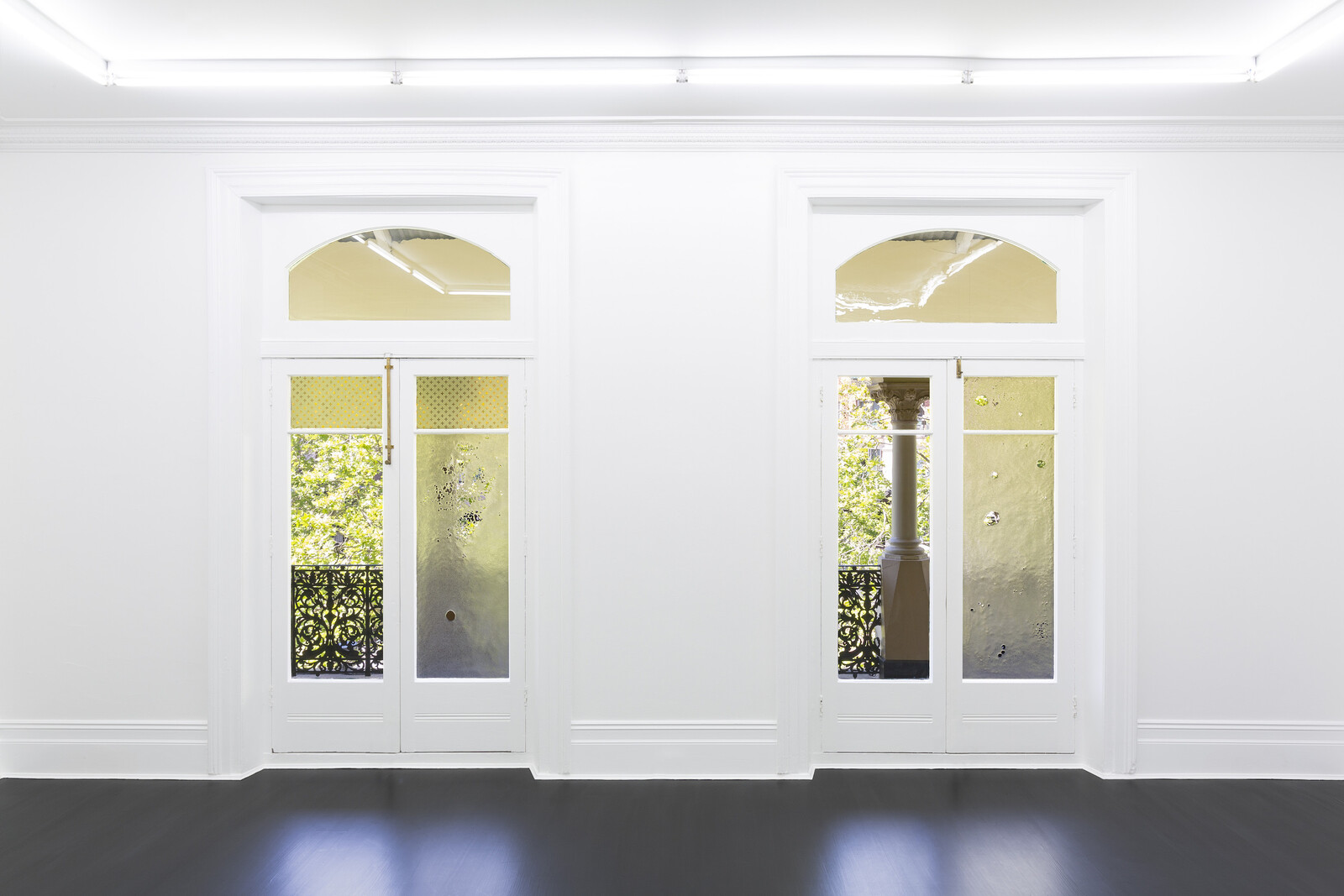
Kate Newby’s sculptures, which can take the form of wind chimes, rocks, puddles, tiles, shells, bricks, and textiles, emerge from observations of her everyday surroundings. For her 2018 installation at Kunsthalle Wien, I can’t nail the days down, Newby covered the gallery’s floor with bricks embedded with coins, bottle caps, glass, and branches collected from the surrounding area. In her recent yearlong project A puzzling light and moving. (2019) at the lumber room in Portland, Oregon, she produced a range of site-responsive works, such as a puddle embedded in a concrete patio that reflected the outside environment. For her current exhibition at Fine Arts, Sydney, Newby uses clay, glass, bronze, and wire to craft an environment of mundane objects and subtle gestures that refine viewers’ perception of the gallery space to reveal a dialectical play of interior and exterior.
For Bring Everyone (2019), which lends the exhibition its title, Newby replaced several panes of glass in the balcony doors with handmade ones embedded with a number of holes. The crystalized pattern of the glass blurs the colors of the outside world, in contrast with the sharper, unfiltered images that can be observed through the holes. As well as allowing …
May 21, 2019 – Review
Janet Laurence’s “After Nature”
Claudia Arozqueta
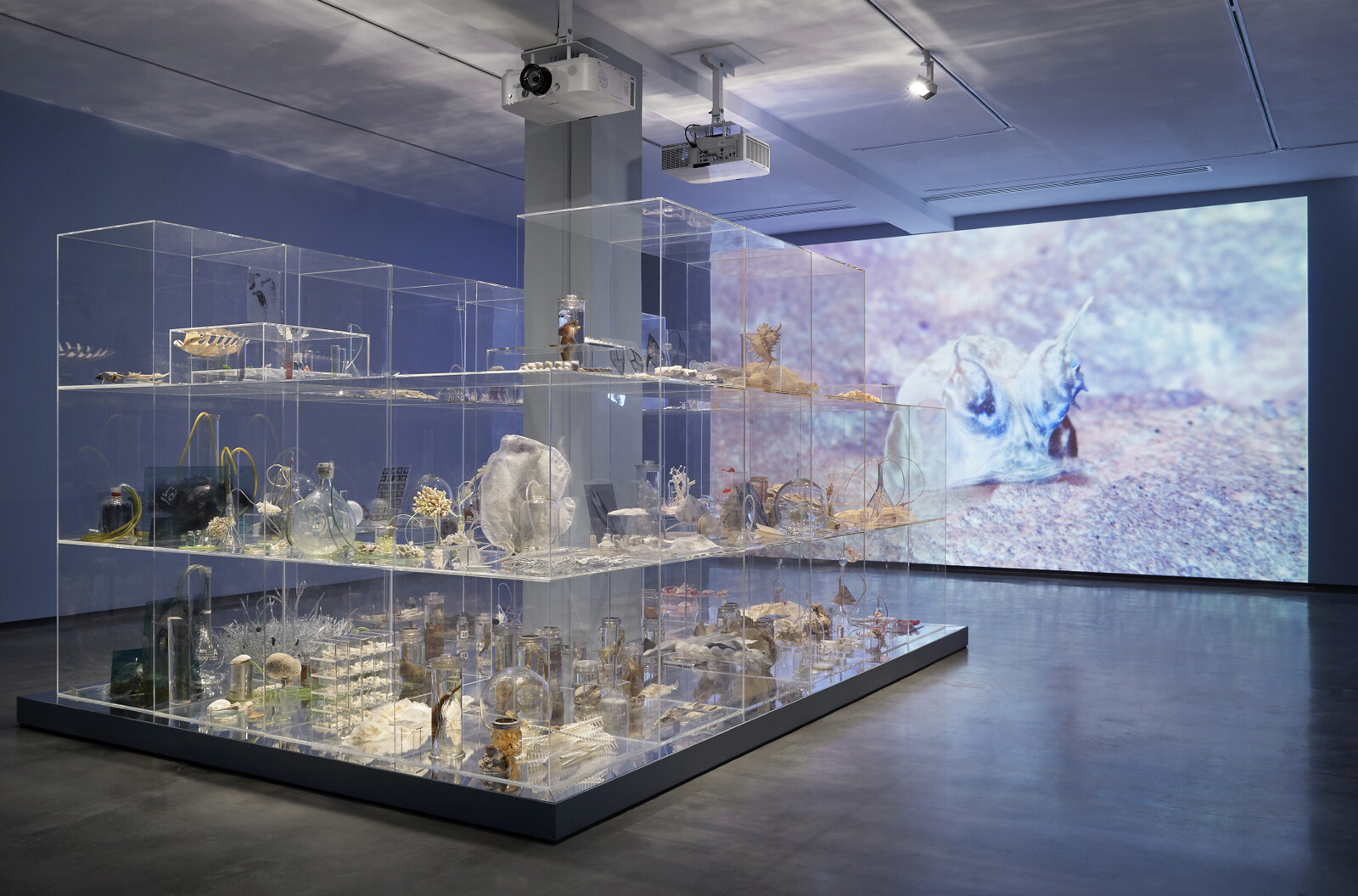
“After Nature,” the latest exhibition by Australian artist Janet Laurence, calls on its viewers to become aware of the interconnectedness and interdependence of the natural world at a time when the pernicious impact of humans on nature is evident. To create this recognition, the Sydney-based artist refers in several of her works to the act of breathing and to illness.
Respiration unites almost all living organisms: we are a breathing biosphere. Plants, animals, and humans depend and are co-dependent on the consumption and generation of oxygen and carbon dioxide. The essential rhythmic cycle is a vital and restorative force, and, like nature, it is something that humans take for granted unless signs of sickness are perceived. This dismissal of nature is the concern at the foundation of Laurence’s work.
With ecological devastation and climate crisis looming on the horizon, Laurence engages with plants and animals endangered by habitat deprivation. Cellular Gardens (Where Breathing Begins) (2005) shows endangered plant specimens from the Australian rainforest in glass vials resting on metal stands, all connected to long silicon breathing tubes. By presenting these threatened plants as intubated patients who need assistance to breathe, Laurence aims to generate empathy. However, more than achieving an emotional resonance …
January 23, 2018 – Review
Juliette Blightman’s “Nightshift”
Claudia Arozqueta
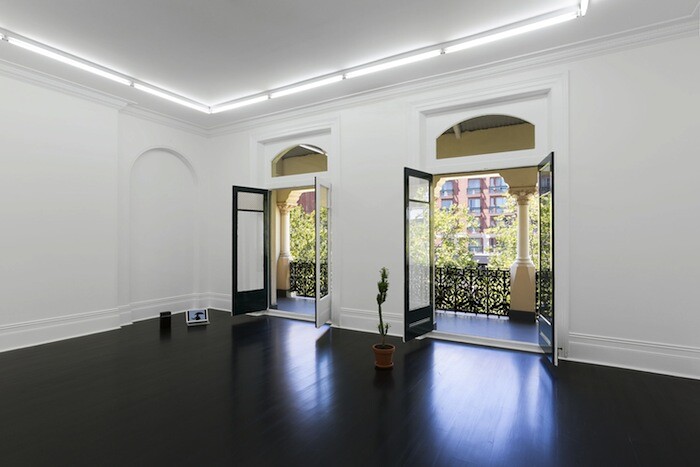
A cactus in a terracotta pot stands beside a laptop playing music through a speaker. The balcony doors are wide open. A cool breeze prompts me to the terrace. I see a brick building, leafy trees, and people crossing the street. I can hear foliage rustling. I look around the room, scrutinizing what at first glance seems insignificant. The computer alone on the floor implies someone’s absence. The domestic environment invites me to sit in front of the laptop and watch a music video that is hardly worth mentioning because within a few seconds my eyes turn towards the sky. I see, in the course of few minutes, an airplane, two common mynas, and a magpie fly by. The sky turns gray. It seems that it’s going to rain. Another track starts, a new rhythm that catches my attention. It’s reggaeton, loud and festive. It is 3:50 p.m. in Sydney, or 6:50 a.m. in Berlin.
Based in Berlin, Juliette Blightman is known for calling attention to the subjective experience of time and for using personal objects and images of friends or family members in her performances, installations, portraits, drawings, and films. She is of a generation of artists—also including Kate Newby, …
July 6, 2017 – Review
Anna Louise Richardson’s “On the hunt”
Claudia Arozqueta
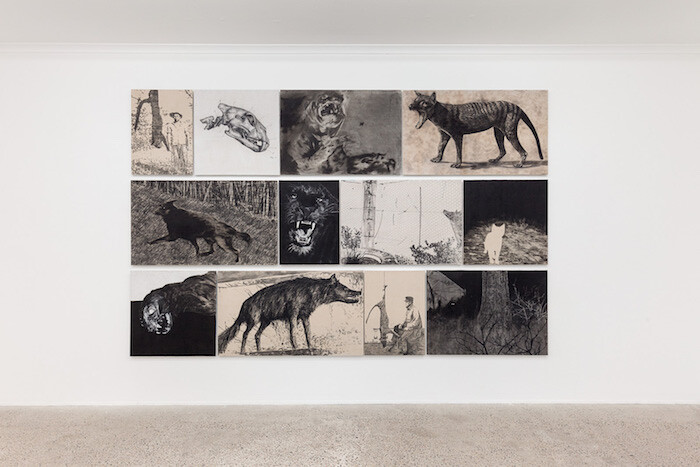
There is no animal in this country that does that type of thing. It was the size of a giant tiger. It was about a meter long and had black, silky fur.
The belief in the existence of elusive, strange, fabulous, and extraterrestrial animals is ubiquitous and timeless. Predatory giant turtles, oversized snakes, and fantastic hybrids are abundant in both Ancient Greek and Egyptian mythology. And even today, in our technologically advanced modern society, mystical animals continue to be part of our imaginary and folklore. Among such popular figures are phantom cats or Alien Big Cats: large predatory felines that, although not native to the United States, Europe, and the Antipodes, reportedly roam in the wilderness of these regions. Some witnesses believe that these elusive felines are ghosts or evil creatures. Others suggest that they are escaped circus or zoo animals or exotic pets, or their descendants, while most consider them regular dogs, cats, and foxes, transformed by overly active imaginations. Books and articles are dedicated to the subject of these cats; amateur organizations have been founded to collect and catalogue evidence; and a pseudoscience, cryptozoology, studies their existence, as well as those of other fantastical entities, such as the chupacabra …
March 2, 2017 – Review
"Harvest"
Claudia Arozqueta
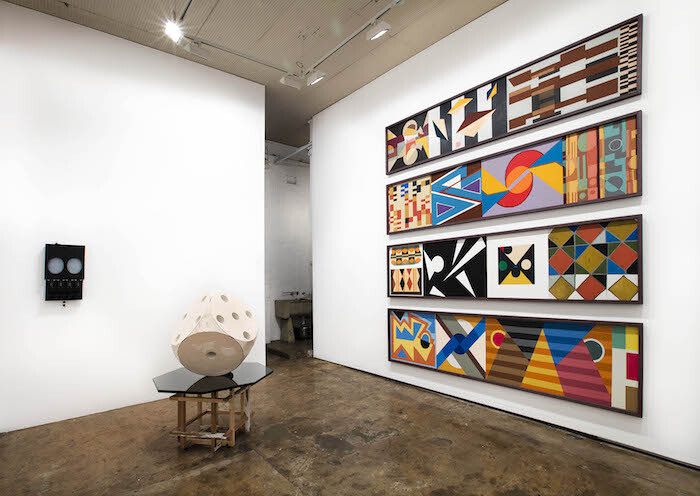
The name “The Commercial” is unusually explicit for a gallery, but the title of the group exhibition currently on view in this one-room gallery in Sydney’s Redfern/Chippendale precinct is not to be taken so literally. While “Harvest” brings to mind food, crops, and still lifes, the exhibition also plays with the meaning of collecting for a future use. It’s an activity that is at the core of the working process of the three exhibiting Australian artists—Diena Georgetti, Patrick Hartigan, and Robert Pulie—who re-interpret or re-use carefully selected images and objects, transforming them into new artworks.
Take Hartigan’s subtle and playful studies of still life painting, full of amateur roughness and recycled supports. Late Harvest (2016) is an apparently quickly executed oil painting of a jug, which juts out from and overlaps its secondhand wooden frame. By placing one image over another, Hartigan strips the frame from its conventional function of protecting a canvas, transforming it into an essential part of the piece. Thus the frame is the painting, which is also a sculpture. Something similar occurs in Window (2016), a delicate and textured panel where three squares create a collaged painting that affirms the artist’s sculptural tendencies. In the upper central …
December 15, 2016 – Review
David Noonan’s “Lead Light” and Renee So’s “Vessel Man”
Claudia Arozqueta

David Noonan and Renee So, whose work is shown in concurrent solo exhibitions at Sydney’s Roslyn Oxley9 Gallery, share an interest in the research, appropriation, and reconfiguration of traditional iconography. Hung on the walls of the main gallery, hidden down a terraced street in the suburb of Paddington, David Noonan’s “Lead Light” consists of twelve silk-screened collages on linen (all works untitled, 2016), their monochrome tones drawn out by the charcoal sisal carpet with which the artist has covered the walnut flooring of the gallery.
Noonan’s theatrical, enigmatic pieces are composed of layered photographic portraits of performers applying makeup. They are overwritten with abstract designs derived from leadlights, decorative windows made of cut sections of glass joined by lead strips. These superimposed images meld tempos, traditions, and styles, blurring arts and crafts, painting and photography, abstraction and figuration, breaking down hierarchies of subject and style. By interweaving figuration and abstraction, creating obscure and strange atmospheres, they bring to mind Man Ray’s mysterious photographs—Barbette Making up (1926), for instance, in which the face of a vaudeville performer applying makeup is reflected in two mirrors—as well as Oskar Schlemmer’s Bauhaus costumes.
One of the most intriguing works is a portrait of an actor who …
